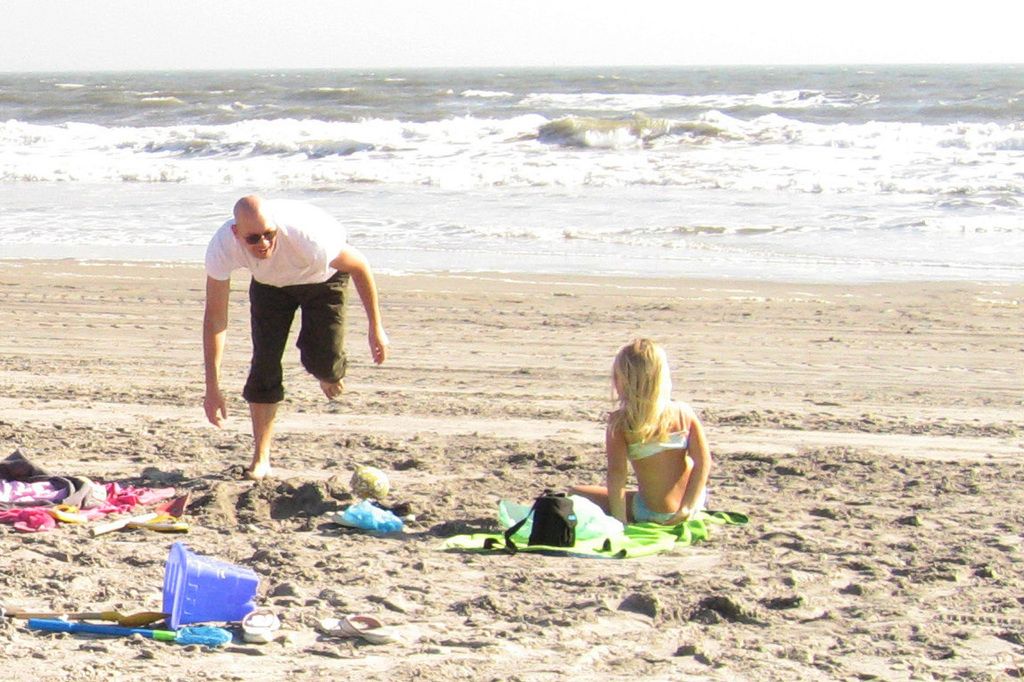Thorough Analysis of Garmin Inreach Explorer Model
The Garmin InReach, formerly known as the Delorme InReach, is an indispensable piece of gear to carry with you on your outdoor adventures. This compact satellite device offers SOS communication and non-emergency text messaging capabilities, making it a lifesaver in remote areas with no cell coverage.
Why the InReach Descends on Everyone's Pack List
So, you may be wondering: How can I send a text message when I'm out hiking with no cell service? That's where the InReach comes in. This little device uses satellites to communicate and send/receive text messages, regardless of your proximity to a cell phone signal. So whether you're trekking through the Amazon rainforest or stranded on the Antarctic ice cap, the InReach has got you covered.
Now, let's dig a little deeper into this versatile piece of gear. The InReach is available in two versions: the SE and Explorer. The SE offers all the core functions, including SOS and two-way texting, while the Explorer adds topo maps, a built-in digital compass, barometric altimeter, and accelerometer. Sure, you might not need all those extras, but for just a few extra bucks, it's a worthwhile investment for emergency situations. If you're main GPS fails, the topo maps, elevation, and compass on the Explorer could be the key to getting you out of a tricky spot.
A Word about Those Subscriptions
Before we dive into all the amazing things the InReach can do, it's important to mention that you will need a paid subscription to use the InReach. We know, we know, nobody likes paying for services, but when you consider that this device could potentially save your life, $15/month doesn't sound so bad, right? Garmin offers several service tiers, but the Freedom Plan, which allows for unlimited preset messages and SOS functionality, is a great option.
Send Preset Messages, Track Your Location, and More
Now, let's dive into the nitty-gritty of the InReach's functions. There are three preset messages for sending quick notes to loved ones without bogging you down with excessive typing. These messages can be customized on the InReach website and synced to the device for easy sending.
There's also a feature called Quick Text Messages, where you can pre-type messages on the website, saving you the hassle of laboriously typing out messages with the rocker keyboard on the device. Keep in mind that using Quick Text Messages will eat into your data plan.
In case of an emergency, the InReach's SOS beacon gets you the help you need, fast. When activated, the unit sends a distress signal, which triggers a response from the GEOS emergency response team. They'll coordinate a rescue response and provide updates via the device. Keep in mind that, just like any other emergency response system, the SOS button should be used carefully and only in true emergency situations.
The InReach can also track your location, perfect for sharing your hike with friends and family or for emergency situations. You can set the tracking interval and location pings to suit your needs.
Navigation and Maps
The InReach uses GPS for navigation functions, but it's not its strong suit for navigating trails or roads. If you're looking for a high-quality mapping and navigation device, we'd recommend going with something like a Fenix or eTrex. However, the InReach's mapping features are useful in a pinch, and the added GPS functions can give you some backup navigation tools in case your primary GPS fails or the batteries die.
The Explorer model comes loaded with topographic maps of the United States, Canada, and Mexico, while other regions will have maps tailored to their respective areas. You can also load additional worldwide maps onto the device from the InReach website.
The InReach lets you create routes on the map, add waypoints, and navigate to them (albeit in a straight line, not following trails or roads). You can also mark waypoints by entering specific coordinates.
Using the InReach Outdoors
The InReach is easy to use, with a straightforward layout and menus. The power and SOS buttons are strategically placed on the unit, making them easy to find in an emergency situation. Plus, the menus are simple and intuitive, with a rocker button for navigating through the options.
The InReach's satellite text messaging capability is the standout feature, allowing you to send and receive texts with any cell phone, anywhere in the world. Here are a few ways to send messages:
- Preset messages: These canned messages are easy to send from the unit and are essential when you're on a hike where typing is difficult or impossible. You can customize the preset messages on the InReach website.
- Quick Text Messages: These pre-typed messages help you get your point across without laboriously typing out each message with the rocker keyboard. Keep in mind that Quick Text Messages will eat into your data plan.
- Custom messages: You can manually type out a text and send it, although using the rocker keyboard can be a pain. Typically, you'll use the preset messages 99% of the time.
The InReach's satellite performance is impressive, using the Iridium satellite network for global coverage. While it does best with a clear line of sight to the sky, we've found it to work well even in heavily forested areas or with cloud cover. The unit will try to send messages even if it doesn't have a connection, so you can send a message and trust that it will deliver when it connects.
Stay Safe with the InReach's SOS Feature
The InReach's SOS feature is the number one reason we recommend this device. In case of an emergency, like an accident or injury, you can hit the SOS button and reach out for help. Garmin has partnered with GEOS, an emergency response team, to coordinate rescue efforts. The team will contact the appropriate agencies and coordinate a response based on your GPS coordinates and any additional information available. This is a crucial feature in remote areas where phone coverage can be spotty or non-existent.
Rescue Insurance
Worried about the costs associated with an emergency rescue? Garmin offers rescue insurance plans for the InReach device. For a small monthly fee, you can opt into the GEOS Search and Rescue insurance, which covers rescue expenses during life-threatening emergencies alerted with your InReach Explorer. The insurance is optional, but we think it's a small price to pay for peace of mind, especially when you consider the potential costs of a rescue in remote areas.
Stay Updated with Weather Reports
The InReach also offers weather forecasts for various locations, using data from the DarkSky service in the United States. You can get basic, premium, and marine forecasts, with differing levels of detail and updates. The weather reports are useful for short or long-term navigation planning during outdoor adventures.
Battery Life and Syncing
The InReach's battery life is solid, with 100 hours of use at a 10-minute tracking interval, and up to 75 hours with a 1-second logging interval. If you don't need constant tracking and logging, the device can last for weeks on a single charge. The device does draw more power when tracking and transmitting, so keep an eye on your battery life if you're planning on heavy usage.
You'll need a computer to set up and use the InReach, as it requires a sync via USB cable. You'll also need to connect the device to the internet to access maps and update the firmware. You can also use the Earthmate app on your smartphone to access maps and other features, but this requires connecting the InReach to the phone via Bluetooth.
Choosing the Right InReach for You
The InReach comes in two versions: the SE and the Explorer. The SE has all the core functions, including SOS and two-way texting, while the Explorer adds topo maps, a built-in digital compass, barometric altimeter, and accelerometer. We recommend spending the extra $50 for the Explorer, as the added mapping and navigation features can be essential in emergency situations when your primary GPS fails.
Alternatives to the InReach
If the InReach doesn't quite fit your needs, you might want to consider the Spot Messenger or the ACR ResQLink. The Spot Messenger offers one-way communication, SOS capabilities, and GPS tracking for a lower price point, but its reliability can be questionable. The ACR ResQLink is a dedicated emergency beacon without the navigational features of the InReach, but it's built to industrial standards, requires no subscription, and works with the SARSAT COSPAS system.
Conclusion
Overall, the Garmin InReach is a must-have piece of gear for any outdoor adventurer. It offers satellite communication, navigation functions, and an SOS beacon that could potentially save your life in an emergency. With a few variations in features and pricing, you can find the right InReach for your needs and budget. Whether you're hiking through the wilderness or exploring the far reaches of the globe, the InReach will help you stay connected and safe.
So don't leave home without the Garmin InReach. Your adventure-loving self will thank you. And with this lifesaver in your pack, you can enjoy your outdoor exploits with confidence and peace of mind.
- The Garmin InReach satellite device is essential for sending text messages during outdoor adventures when no cell service is available, whether trekking in the Amazon rainforest or stranded on the Antarctic ice cap.
- Available in two versions, the SE and Explorer, the InReach offers features like SOS communication, two-way texting, topo maps, a built-in digital compass, barometric altimeter, and accelerometer.
- A paid subscription is required to use the InReach, but the Freedom Plan, which allows for unlimited preset messages and SOS functionality, is a cost-effective option.
- The InReach allows for sending preset messages, quick texts, and custom messages through its satellite text messaging capability. It uses the Iridium satellite network for global coverage.
- The device features a GPS for navigation functions, but it's not the best tool for navigating trails or roads. It can provide backup navigation tools if your primary GPS fails or the batteries die.
- The InReach's SOS beacon is a crucial feature, alerting the GEOS emergency response team in case of an emergency, and coordinating a rescue response based on GPS coordinates.
- GEOS Search and Rescue insurance is available for an additional monthly fee, covering rescue expenses during life-threatening emergencies alerted with the InReach Explorer.
- The InReach provides weather forecasts for various locations, using data from the DarkSky service in the United States. It offers basic, premium, and marine forecasts with differing levels of detail and updates.
- The InReach's battery life lasts for 100 hours at a 10-minute tracking interval, and up to 75 hours with a 1-second logging interval. The device requires a computer for setup and syncing, and a smartphone can be used with the Earthmate app via Bluetooth.
- Alternatives to the InReach include the Spot Messenger and the ACR ResQLink, each offering different features and price points. The InReach, with its satellite communication, navigation functions, and SOS beacon, remains a must-have for any outdoor adventurer.







